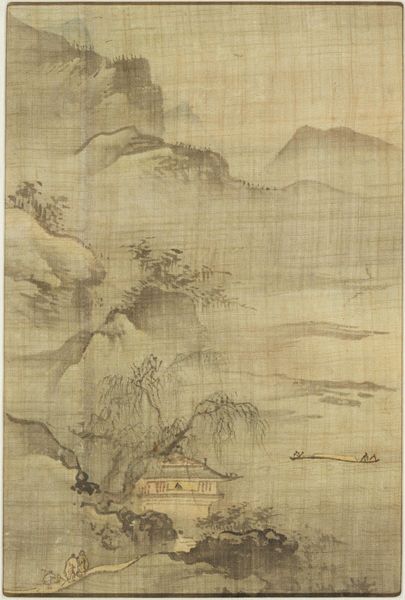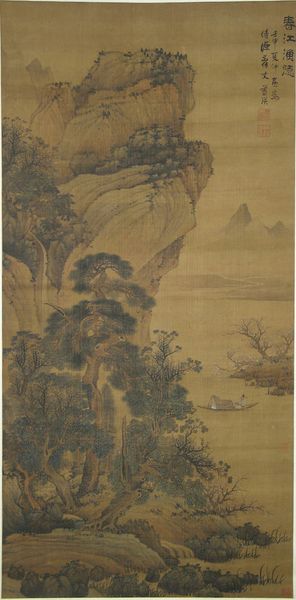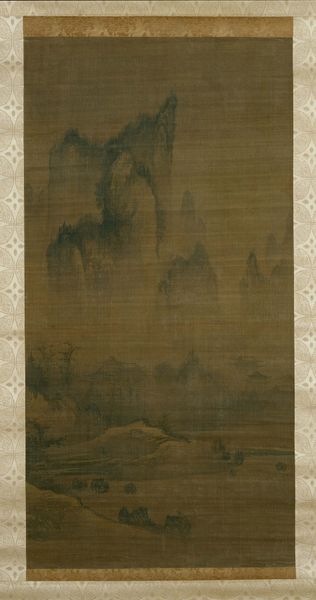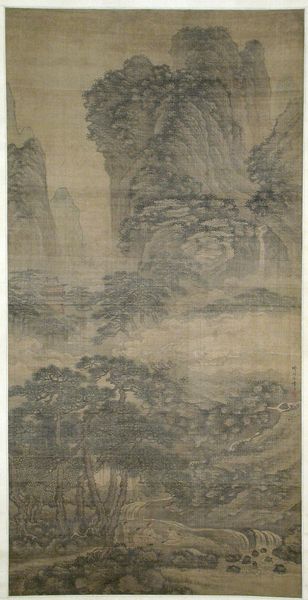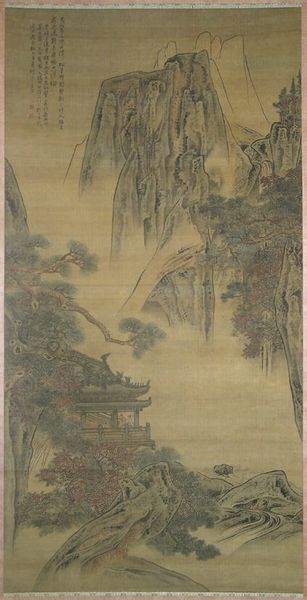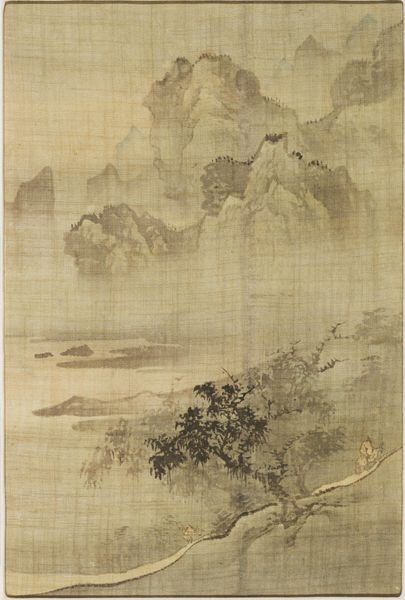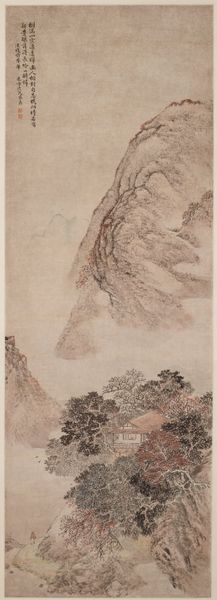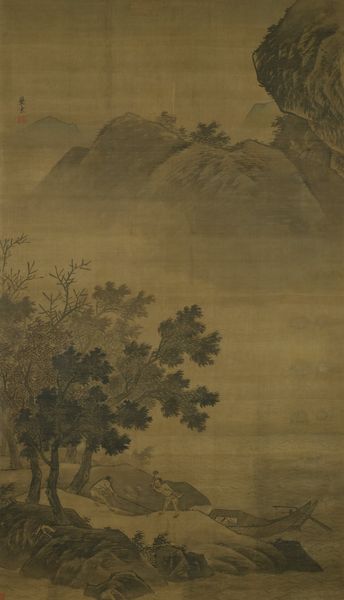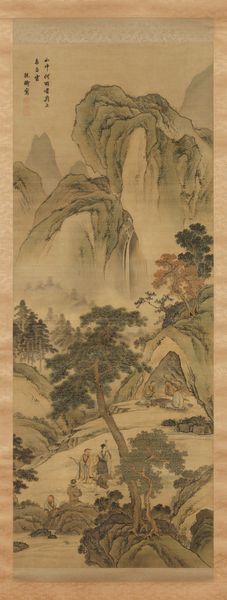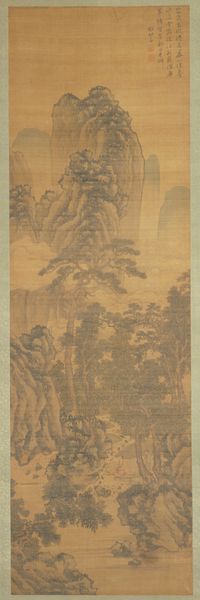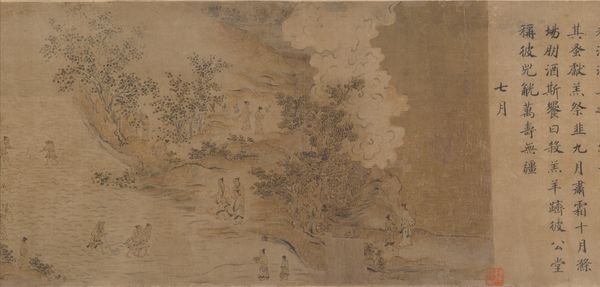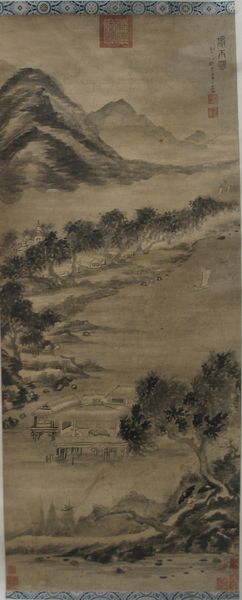
tempera, painting, watercolor, ink
#
water colours
#
tempera
#
painting
#
asian-art
#
landscape
#
figuration
#
22_ming-dynasty-1368-1644
#
oil painting
#
watercolor
#
ink
#
orientalism
#
calligraphy
Dimensions: Image: 76 1/8 × 41 1/4 in. (193.4 × 104.8 cm) Overall with mounting: 9 ft. 4 3/4 in. × 42 9/16 in. (286.4 × 108.1 cm) Overall with knobs: 9 ft. 4 3/4 in. × 46 3/8 in. (286.4 × 117.8 cm)
Copyright: Public Domain
Editor: We're looking at "Spring Morning in the Mountains" by Xie Shichen, created sometime between 1487 and 1567. It's done in tempera, ink, and watercolor. The hazy, muted tones give the mountains this ethereal feel. How do you interpret this work within its historical context? Curator: This painting really encapsulates the Ming Dynasty’s literati culture. The artist, a professional painter, creates a landscape echoing the values of the educated elite. Do you notice the figures down below? Editor: Yes, they're quite small, almost blending into the landscape. Curator: Exactly. They represent the ideal of retreating from public life to appreciate nature, a potent political statement. In a time of rigid social structures, valuing nature showed the patron’s discerning taste and scholarly ideals. This painting wouldn’t just hang on a wall; it was also meant to demonstrate political values and be part of a wider conversation about status and authority. It's not just an image of the mountains; it’s a claim to cultural capital. Do you agree? Editor: That's fascinating! So, the very act of commissioning or owning a piece like this became a form of social positioning, sort of like making a statement of one's belonging in the right circles. Curator: Precisely. And think about where this would have been displayed—in the private study of a government official, perhaps. That changes how we view it. It wasn’t for mass consumption, it was about intimacy and a shared cultural language within a very specific segment of society. Editor: I see it differently now. The landscape is a beautiful backdrop, but really, it's a carefully curated performance. Curator: It highlights how artistic representation, patronage, and political meaning are all deeply entwined in Ming Dynasty art. We must think about who is shaping what the public sees. Editor: I’ll definitely look at these works with new eyes now, considering the social stage they were meant to occupy!
Comments
No comments
Be the first to comment and join the conversation on the ultimate creative platform.
